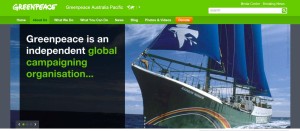Stories are a part of human nature. We all love to hear a good story whether it is through movies, books or from family or friends. That’s why I am a strong believer that organisations needs to tell great stories and by doing so they will appeal to people’s emotions and gain a more loyal follower base. This is especially important for not-for-profit organisations. Although more not-for-profits are starting to catch on to this phenomenon, but for those still lagging a little behind, here are my tips.
Go Deeper Inside: Find your Core Values
As a not-for-profit, I know you’ve got plenty to worry about. Where are you going to get more supporters? How will you fund your current project or that campaign you’ve been working on? Despite all of these daily worries, it’s important to remember your roots.
When people hear stories about how a large organisation started from humble beginners, it creates an emotional connection with the brand. People can then start to see the human side to your organisation and step away from thinking of it as being faceless. For a not-for-profit it’s also important to differentiate between the wider issues that you support and the exact issues that your work revolves around. So if you are a aid agency that wants to alleviate poverty, but is starting with ensuring children have access to an education, make it clear in your communications that you focus on education. Or if you work for environmental protection, hone in on what you want to protect.

This image is a great example of how Greenpeace uses images to convey a clear message about their work
Greenpeace is a great example of this because they do a great job of keeping their image strong and clear. Their website tells you that they work in environmental campaigning and gives examples of issues they work for such as climate, ocean, food etc.
Post The Stories in The Right Spaces
Now that you’ve thought of some stories you just need to choose the right avenue to tell them. Back in the days before social media, the only way for companies to tell stories was through television, radio and maybe print advertisements. Although, these are still avenues for storytelling, they can be too costly for small not-for-profits and people are not as interested in direct advertising in this digital age. Don’t fret though, because there are so many more avenues now such as YouTube and social networking sites as well as your own website where you can tell captivating stories.
Remember no one likes being sold to. Human beings like bring informed but they want to be the decision makers. Lead them towards a path through your engaging content by making your stories more entertaining, but let them decide that they want to support your cause.
Stories can be told through so many platforms such as blogs, videos, Facebook posts, Facebook pages, Infographics and web pages. As much as the written word is a powerful means of communicating, using images and videos an add that greater level of engagement and. As an organisation you can put up pictures of events you run or cool stories about your projects and if viewers enjoy the content they are might even share it with friends. That way you’re doing less work.
A Compelling Campaign; Greenpeace’s Ken and Barbie Breakup
Now before you start asking me why I’m bringing up Ken and Barbie into the conversation, take a closer look at this campaign.
Here Greenpeace used the story of Ken breaking up with Barbie over the damage and destruction caused by Mattel’s forest destruction. The video shows Ken being outraged by Barbie destroying forests and the gorillas. It doesn’t actually show Barbie at all, but implied it through Ken’s reaction and blood splitting out of the laptop. By using the well known figures, Barbie and Ken, Greenpeace were able to connect with a wider audience, because let’s face it most of us have probably played with these dolls.
This campaign didn’t stop there. It went on to showcase a public twitter feud between Barbie and Ken. They even created a Facebook page for Ken that people could follow. Whilst this is all make believe, it’s pretty awesome and captivating storytelling. Most importantly, they supplemented their story with opportunities for supporters to take action by promoting them to send letters to Mattel. When you engage people to such an extent that is the perfect time to ask them to support your cause.
Guess what? This campaign was a success and Mattel stopped using the APP (Asia Pulp and Paper) as its manufacturer because of their unsustainable forestry practices. It then paved the way for other companies to be aware of their environmental footprint. Well done Greenpeace.
Alright now. Enough said. Let’s get some stories happening. Whether it’s about the issues you work for, the campaigns you are running or your recent fundraising events. Get out some good stories and keep track of your analytics to see if your viewer interaction rates have improved.
